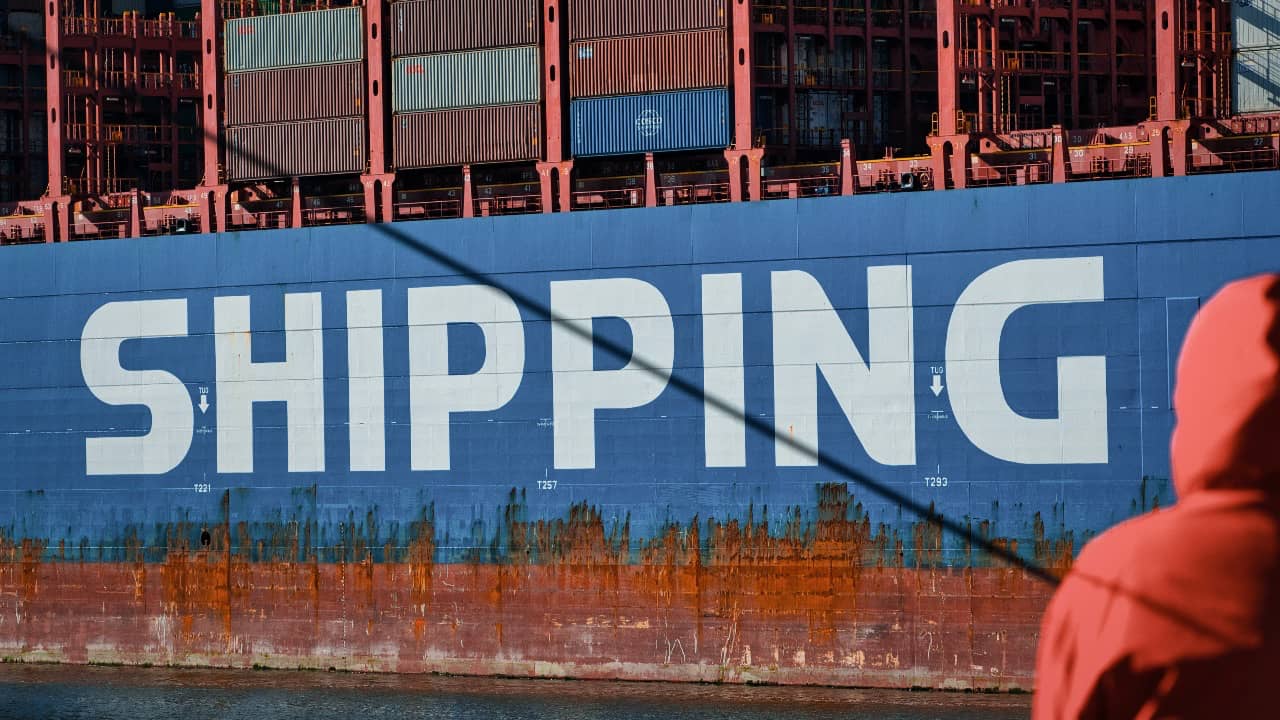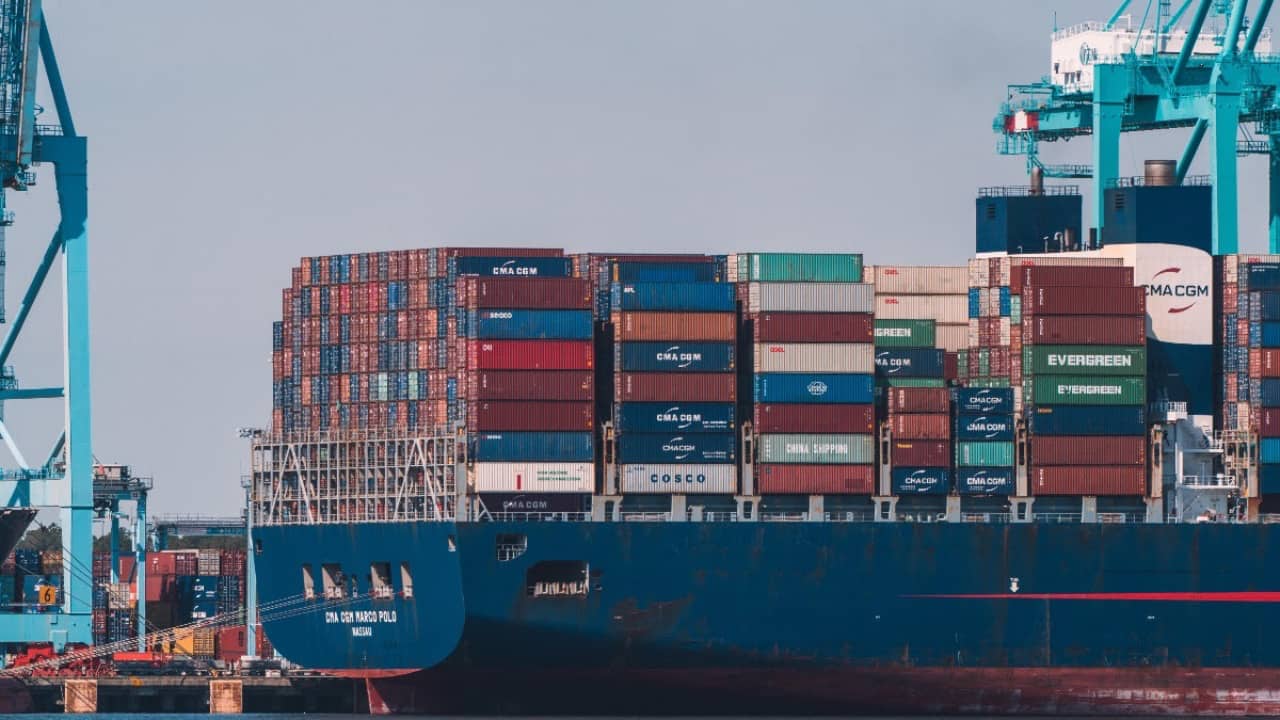
The Challenges of a Post-Covid World for Global Supply Chains
9-minute read
If 2022 taught us anything, it was to expect the unexpected. It was the year that shocked us with the war in Ukraine, endless Chinese Covid lockdowns, soaring inflation and the devastation of tighter fiscal and monetary policies.
Extreme weather affected supply chains from India to the Mississippi and Australia to the Rhine. Freight rates collapsed, and the peak season was a non-event.
But, on the other side of the ledger, in most parts of the world, 2022 also saw the emergence of the spring shoots of a post-Covid world, with all the freedoms that entails.
In these highlights from the Loadstar podcast episode, Mike King examines what a post-Covid world means for shippers, forwarders and carriers.
Mike King: We were talking a year ago about shipping markets, and back then, we had all sorts of new entrants using very old ships that really shouldn’t have been competitive, but they were.
Spot contract rates were through the roof, slot space was hard to find, port congestion was tight, and no one could find containers, all of that has unravelled through 2022. How did all of that happen?
Mike Wackett (The Loadstar, editorial consultant): Good question. The container ball run started in the summer of 2020 from this massive e-commerce drive demand and effectively continued right the way through to this summer.
Carriers collectively made mega profits. About 200 billion last year, and despite the recent collapse of rates, are on for about 250 billion this year.
These huge revenues and the scarcity of supply encouraged a host of new entrants into the liner market who deployed small ships on long haul that were totally uneconomic to operate.
Then we saw demand fall off the cliff just at the time of the traditional peak season in July and August.
Everybody was predicting this new normal to take a while to come through, but it happened, and carriers started to blank or cancel sailings, and the chronic port and landside congestion, that propped up the rates eased around the world.
Xeneta’s short-term rates from Asia to North Europe went from a market average of over US$15,000 for 40ft in January this year to just over US$2,000 last week.
And likewise, on the Trans-Pacific, Xeneta’s short-term rate component for Asia to the US West Coast has nosedived to a market average of around US$1,500 for 40ft.
Mike King: We’re already seeing a bit of scrapping of smaller vessels, aren’t we?
Mike Wackett: Yes, there’s a batch of very old ships that should have been scrapped years ago, but obviously, they kept them going because there was unbelievable demand for anything that could float, as major retailers were chartering ships at huge costs, trying to protect their supply chains.

Mike King: What are your biggest winners and losers of 2022?
Alex Lennane (The Loadstar, publisher): Well, I would say the number one loser was the environment, and that was probably true the year before, and it will be every year until fuel providers, airlines and airline customers start to put sufficient investment into sustainable aviation fuel production and other methods for lowering emissions.
Other losers – the shippers have had a really tough couple of years. First was no capacity, and then capacity was really expensive.
Then all of a sudden, the ships sorted themselves out, and there was too much inventory, and they had to discount everything. I feel sorry for them. They’ve had a tawdry time.
It’s starting to ease up for them with rates going down. Any company that booked space at the highest market and now can’t fill it, I feel sorry for them.
Mike Wackett: The carriers with the mega profits they made and the results they could have never dreamt of are topping the list of winners.
And the ship owners that have seen ships destined for the scrap market bought up.
I’d say ports have also benefited from the good volumes and, of course, from the landside congestion, which has given them windfall profits from storage costs.
Container leases and manufacturers have also been pumping in more stocks amid all this equipment tied up in inventory.
And, obviously, shipyards for taking all those new orders that keep them in jobs for several years to come.
On the other side of the equation, the poor shippers have suffered very badly.
You think you have a contract, then you don’t have a contract. You think you have a rate, then you don’t have a rate. Then the carriers say they won’t deal with you because you’re not big enough, etc.
That’s all filtered through to retailers, shippers and consumers, dealing with inflation and paying for those mega-high rates that the carriers have obtained.

Mike King: What do you think are our industry’s biggest takeaways from the COVID era?
Is it tech uptake, is it working practices, is it how to make a lot of money in a pandemic, or the dangers of not having a resilient supply chain or relying on non-friends or countries with different values for key supplies?
Alex Lennane: It is to expect the unexpected and then wait for the bullwhip effect. We’ve hopefully learned something from that. I don’t know if there’s anything we can do about it, but very interesting to watch.
And then relationships. The companies that maintained or strengthened relationships across the supply chain will fare better next year.
Mike Wackett: This insufficient attention to relationships reached an all-time low this last year.
Relationships have to be repaired because one can’t live without the other as shipping is a people business.
People want to talk and do business and do not necessarily want to be told, well, you have to send an e-mail to somebody in Singapore or whatever to get that detail they need to know.
Also, when things go wrong, how do you sort that out? Certainly, when I was running the shipping line, I said to my guys, right, it’s not what’s gone wrong is how you communicate that information to the customer.
Get to the customer the Sunday before his commercial guys get to him so that the customer knows. Communication has been lacking, and whoever can bring that back has got it, in my estimation.
Mike King: Let’s have a look at 2023 now. The logistics business or landscape looks totally different compared to a year ago.
For example, instead of long lead times for parts and production and delays due to excess demand, we’ve now got these big inventories to clear and excess capacity everywhere.
I’m being told that carriers have been unable to push through December general rate increases.
Mike Wackett: I’m not surprised. The obvious thing is that everybody will be looking at and wondering what the carriers are going to be doing with 2.3 million TEU of new build capacity that’s about to hit the oceans next year.
Mike King: Are we back to seasonality? What happens in Q2 and Q3?
Mike Wackett: I can’t even tell what will happen in Q1 and Q2. What is this new normal?
Obviously, rates are down to pre-pandemic and even less, but we have higher operating costs and inflation, so something has to give, and the jury’s out even on Q1, let alone Q2 and Q3.
Mike King: There wasn’t much of a fourth-quarter peak. Are we looking at any improvements after the Chinese New Year?
Alex Lennane: I don’t think so. If you look at the 5-year track index, you can see that the major trade lanes rates are coming down pretty fast towards pre-COVID prices.
Then maybe there’ll be a slight uptick after the Chinese New Year, but I don’t think it’s going to have any major impacts on that general decline.
I suspect we’ll be back to the traditional peaks. There is a lot of belly capacity [aircargo] coming back as passengers come back.
I suspect the market will normalize. That’s barring, of course, major shocks like another war, environmental disasters, pandemics, or whatever.
Mike King: The forwarding industry has got a lot more competitive all of a sudden. What’s happened there?
Gavin van Marle (The Loadstar, managing editor): The decline in ocean freight rates and the steepness of those declines have reminded us of the days in the aftermath of the financial crisis and ruinous rate war in 2010 and 2011 that almost put some carriers out of business.
One of the features of that, from the freight forwarders’ perspective, was that because rates were crashing so fast and demand was so low with much spare capacity, it was a time when a lot of the larger freight forwarders did big large block space deals with the big carriers for very low rates.
They did it on a speculative basis with bookings, say up to 500 TEU a ship, bearing in mind that at the time, larger ships were around 11,000 TEU, to put that in the current context as well.
So the larger forwarders would then use a country basis to attack the smaller forwarders’ customer lists and offer them far better rates. History often has a habit of repeating itself.
I suspect that life in 2023 will be very difficult for the smaller freight forward because not only are they dealing with decreased demand from their clients, but those clients themselves will be getting a lot of love and attention from the larger competitors.

Mike King: Obviously, what happens in our industry is determined to a huge degree by what’s going on in the global economy.
We’ve got these forecasts for a recession in Europe and the US, although consumer demand is holding up a lot better. However, most forecasts suggest lower exports out of Asia in the first half of the year.
Are there any reasons for a market or economic upturn in 2023? Can you think of any opportunities in the current market or macroeconomic environment?
Mike Wackett: Can the world or most of the world come out of this recession relatively quickly?
And if we can, we know, as we’ve seen this before after the financial crisis, that there’s a pent-up demand that gives everybody a boost.
So the question is how deep and long this recession will last? But we do know that recessions do end as they do start, so at some stage, there will be that uptick, whether it’s next year or not, who knows?
Regarding opportunities, carriers now have a great opportunity to get back to best in class in terms of customer service communications and provide a proper line of services again.
When people have a choice, they want to deal with people they can relate to and get answers from.
We all know that problems happen, but it’s how you deal with those problems.
There will be great opportunities for carriers to up their game and hire some customer service and salespeople to get back to dealing with their customers.
Gavin van Marle: European Commission is due to publish its working documents on the consortium block exemption regulation on legislation about carrier alliances. German competition authority has already said that they want this legislation to be rewritten.
I think there’s considerably more momentum behind some adjustments to the legislation, whether it’s simply reducing the alliances’ market share threshold.
This would force a rejigging of the alliances, possibly decreasing them in size so that currently three alliances become four or MSC departing the 2M alliance and going as a standalone global operator.
There’s a legislative aspect to that service-level issue as well. And given the difficulties that European citizens are going through now, there’s pressure on these regulators to address competition concerns on behalf of the consumers.

Alex Lennane: I think there will always be people in this industry who find opportunities, whatever the weather or the crisis.
I think the thing we’ve learned is that we know nothing and can predict nothing, apart from somebody will take advantage of it somewhere.
The thing I’m interested in watching for next year is how the shipping lines use their cash.
Will their airlines be successful?
Will they manage to integrate all their new purchases successfully, especially in a difficult market?
Mike King: What are your biggest risks, upside or downside, for 2023?
Mike Wackett: The big risk is this massive amount of capacity being delivered next year of 2.3 million TEU.
There is a risk that there will be a long and deep recession.
There is a risk that carriers will abandon uneconomic routes, leaving shippers without service at all, which is how carriers now look at these economics.
There is a risk that some carriers that have taken on a vast number of chartered ships on a long-term basis will go bust, and that domino effect will take out more companies.
Source: The Loadstar Podcast. The podcast transcript was edited for clarity.
P.S. Easy Freight Ltd helps New Zealand importers & exporters to save money on international freight and reduce mistakes by guiding how to comply with Customs and biosecurity rules.
➔ Contact us now to learn how we can assist you.
